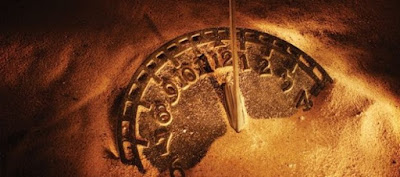Obviously, the collapse did not occur and, right on time, the world's computer systems joined humanity as we waltzed into the 21st century without losing modernity.
But as September approaches, some are warning of a much more provable threat – one rooted in the Jewish religion and in history – called the Shemitah Year, a 3,000-year-old mystery that is remains part of the Jewish faith.
What is the Shemitah? It is the "Sabbath year," which is also known as the sabbatical or sheviit; the seventh year of a seven-year agricultural cycle mandated by the Torah, Judaism's religious guidance, for the Land of Israel.
As reported by CBN's "The 700 Club," Shemitah "is about the events happening in America and around the world that were predicted to the time and date of occurrence" based on writings and interpretations in the Torah.
Read what others are doing to prepare for catastrophic events at preparedness.news
Religious historical reference
Some believe the Shemitah portends a "day of reckoning" for the United States.
As reported by WorldNetDaily in June, a recent U.S. Supreme Court decision allegedly hastened that day:
With the climax of the Shemitah year now just three months away on Sept. 13, America continues to saunter down the path of defiance to the will of God, say Christian leaders, inviting judgment on the land.
The latest affront to biblical sensibilities came this week when the U.S. Supreme Court ruled that Americans born in Jerusalem must not have "Israel" listed on their passports as their place of birth, saying the city remains part of disputed territory....Such a move could provoke Muslims to violence, President Obama's U.S. State Department argued, so the passport should say "Jerusalem" not "Israel." Congress took the opposite stand, and the Supreme Court ruled in favor of the executive branch.
While that may not seem important to most Americans, InvestmentWatchBlog provided further evidence that the "seventh year" is again upon us:
Rabbi Johnathan Cahn noted that the Shmitah in 2001 caused the stock market collapse at the end of September, and then in 2008 the Shmitah also caused the economy trouble. The next Shmitah happens to be at the end of the 29th day of Elul this September.
The site goes on to list a dozen other examples that seem to support the claim that another Shemitah year is upon us.
Find more prophecy articles at prophecy.news
Disturbing trends?
Carl Gallups, pastor of Florida-based Hickory Hammock Baptist Church, host of a Christian radio show and author of "Final Warning: Understanding the Trumpet Days of Revelation," agrees that time is growing short, WND reported.
"There can be no doubt that there is an amazing convergence of end-time prophecies occurring right before our eyes," he told the news site. "Think of where we are in history – Israel is back in its land – a 2,500-year-old prophecy fulfillment – Jerusalem is in the hands of Israel, the nations of the world are rallying against Israel, including the U.S., and Israel is now literally surrounded by Islamic enemies who are publicly calling for the complete destruction of the Jewish state."
There are additional signs that something is in store. First, as noted byAllNewsPipeline.com, there are a number of long-term storable food retailers experiencing a run on their products, leaving them short on some and completely out of stock on others, with restock times as long as 3-4 weeks.""
In speaking to some retailers, the site reported that the rush
on supplies appears to be tied to "some September event."
http://www.naturalnews.com/050677_Shemitah_September_event_food_supply.html
http://www.naturalnews.com/050677_Shemitah_September_event_food_supply.html















